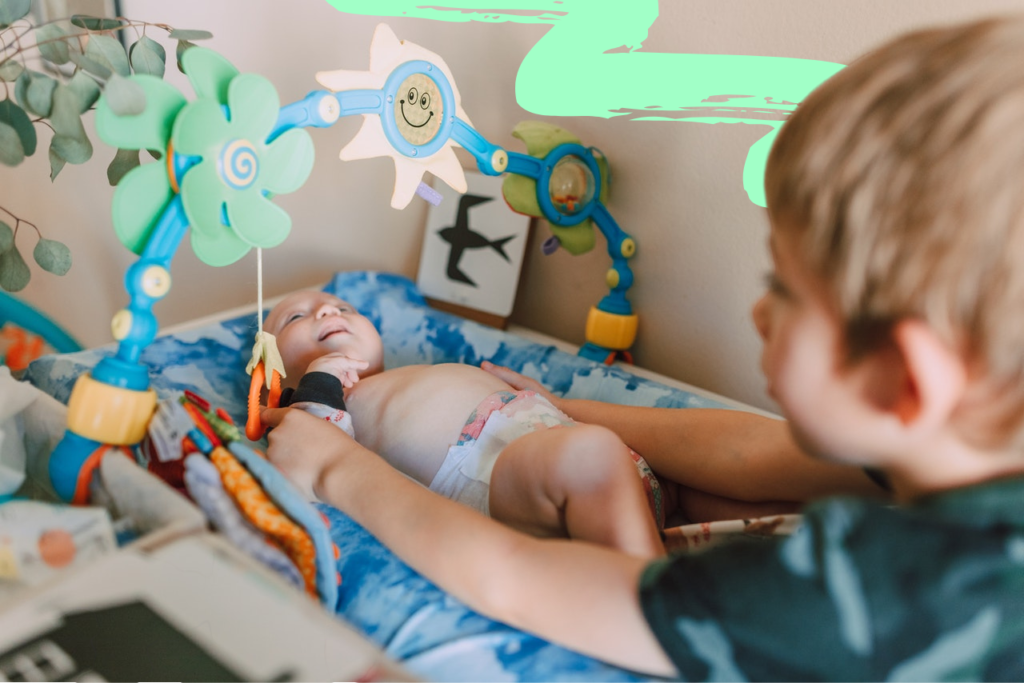Creating a perfect nursery is one of the most exciting aspects of preparing for a new addition to the family. Beyond just a space for sleep, your baby’s first room is where many firsts will happen – from the first night at home to the first steps. Given the importance of this space, it’s important to consider both style and functionality. Here’s a guide on how to create a beautiful and practical nursery for your little one!
Choose A Theme
Choosing a theme can give you a clear direction for selecting everything from the colour palette to the decorations. Popular themes include nature-inspired motifs, soft geometric patterns, and classic storybook characters. These can be subtly integrated through wall art, bedding, and accessories, creating a cohesive and inviting environment. A well-chosen theme not only enhances the aesthetics of the nursery but also stimulates the cognitive and visual development of your baby.

Choose The Right Baby Cot
The cot is often the centrepiece of the nursery, so selecting the right one is a big step! Look for models that blend safety, comfort, and style. The latest trend is towards cots that convert into toddler beds, providing longevity beyond the baby years. A quality baby cot with a mattress that ensures safety standards is essential.
When choosing a cot, consider the material and finish. Solid wood cots not only offer durability but also come in various finishes that can match your chosen theme. Ensure that the paint or finish is non-toxic and low VOC (volatile organic chemicals).
Some cots come with additional storage like drawers underneath, which can be extremely useful for storing bedding, clothes, and other necessities, keeping them handy but out of sight.
Functional Furniture
In addition to the cot, consider other furniture pieces such as a changing table, a comfortable chair for feeding and soothing, and adequate storage. Multi-functional furniture that can serve more than one purpose, like a dresser with a changing top, can be a great space-saver in smaller rooms.
A well-chosen chair is great for those late-night feeds or just for comforting your baby. Look for a model that offers good back support and has gentle rocking or gliding motion.
Storage is another critical aspect of nursery design. Choose pieces that offer versatility and functionality. Shelving units with bins or baskets can be used to store toys and books, while a dresser can organise clothes and essentials. Opt for furniture with safety latches and soft-close drawers to prevent fingers from getting pinched.
Consider the future use of each piece. Many changing tables can be converted into regular dressers, and shelves might be adapted for use in any room of the house. This approach not only saves money in the long run but also maintains a familiar environment for your child as they grow.

Soothing Colours & Textures
The colour scheme of the nursery has a big impact on the look and feel of the room. Pastels like soft blues, pinks, and greens continue to be popular for their calming effect. However, more parents are choosing neutral tones such as greys and creams, which can grow with the child and lend themselves well to future redecoration.
Choosing the right colours can influence the mood of the room. Soft blues are known for their calming effect, making them a perfect choice for a sleep-friendly environment. Greens, which symbolise nature and growth, can create a serene and refreshing atmosphere.
Neutral tones like grey, taupe, or beige provide a sophisticated backdrop that allows you to play with colourful accents in decorations and textiles. This flexibility is useful as it makes updating the look of the nursery simpler as your child grows.
Textures also play a role in the nursery’s environment. Soft fabrics like cotton, muslin, or chenille can add depth and sensory experience for your baby. Use these materials in curtains, rugs, or upholstery to balance the colour scheme and enhance the overall comfort of the room.
Lighting Matters
Soft, layered lighting can create a soothing atmosphere and is practical for nighttime feeds without being too harsh. Consider a combination of overhead lights, a dimmable bedside lamp, and maybe even some fairy lights for a magical touch. Blackout curtains or blinds are a great option to make daytime naps a bit easier!
Safe & Sound
Safety and babyproofing are paramount in any nursery. Ensure that all furniture is sturdy and secured. Keep cords from blinds and curtains out of reach, and plug covers in unused electrical outlets. Regularly check toys and decorations for any potential hazards, like small parts or loose threads.
Personal Touches
Finally, adding personal touches can make the nursery feel special. Framed family photos, handmade decorations, or a keepsake shelf can all add warmth and personality to your baby’s first room.
Personalising the nursery can be a delightful aspect of the preparation. Consider creating a feature wall with framed ultrasound images or photos from your maternity shoot. Handmade items such as knitted blankets, custom paintings, or crafted mobiles not only add uniqueness to the space but also can be cherished as keepsakes in years to come.
Remember, the nursery is a space where you will spend a lot of time, so include comforts for yourself as well. A soft throw on the feeding chair, a good reading lamp, and perhaps a small coffee station can make those long nights more comfortable.
The Bottom Line
Creating a nursery is a blend of practical considerations and personal style. By focusing on these essentials, you can design a space that is both functional and beautiful, ensuring it’s a place where your baby—and you—will love to spend time.





